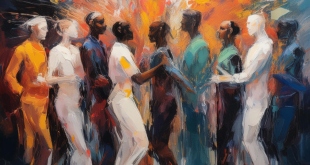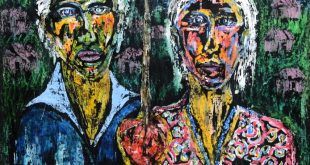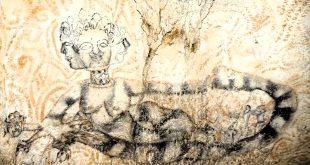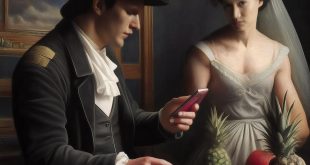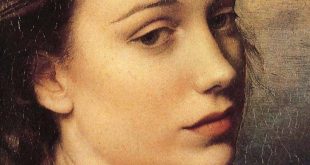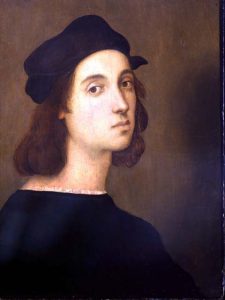
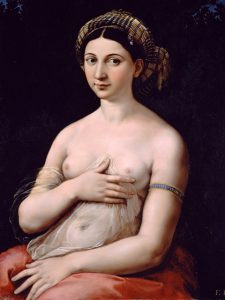 Raffaello Sanzio and his Renaissance season
Raffaello Sanzio and his Renaissance season
At this moment, when the painter of grace and beauty died, an earthquake shook Rome and a storm obscured the sun. For Giorgio Vasari, Raffaello Sanzio was fond of women and carnal delights. Marcantonio Michiel, on the other hand, narrated that on the death of the great painter from Urbino, cracks were create inside the Roman palaces. Inside one of her portraits, a naked girl tries to cover her breasts. That portrait of 1520 seems to have done by a lover for his beloved. She is Margherita Luti, https://www.wantedinrome.com/news/la-fornarina-who-was-raphaels-mysterious-lover.html, daughter of a baker in the Trastevere district. One arm of the pretty girl is wrapp in a bracelet with the inscription “Raphael Vrbinas”.
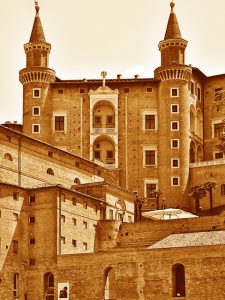
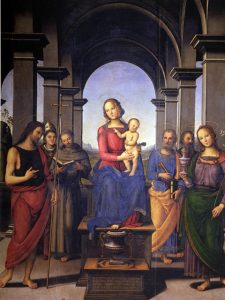 He learned drawing and painting lessons from his father, owner of a prosperous workshop engaged in the creation of works for the aristocracy of Urbino. He was the interpreter of an ideal beauty passed in the taste of entire centuries of civilization. His greatness as an artist conceived art as an imitation of nature. Balance, sense of harmony, calm and serenity are distinctive features of Raffaello Sanzio‘s works. One of his creative interventions is perceptible at the dawn of the sixteenth century in the panel of the Nativity of the Madonna in the predella of the Pala di Fano, as well as in part of the frescoes of the Collegio del Cambio in Perugia https://www.umbriatourism.it/-/nobile-collegio-del-cambio-perugia.
He learned drawing and painting lessons from his father, owner of a prosperous workshop engaged in the creation of works for the aristocracy of Urbino. He was the interpreter of an ideal beauty passed in the taste of entire centuries of civilization. His greatness as an artist conceived art as an imitation of nature. Balance, sense of harmony, calm and serenity are distinctive features of Raffaello Sanzio‘s works. One of his creative interventions is perceptible at the dawn of the sixteenth century in the panel of the Nativity of the Madonna in the predella of the Pala di Fano, as well as in part of the frescoes of the Collegio del Cambio in Perugia https://www.umbriatourism.it/-/nobile-collegio-del-cambio-perugia.
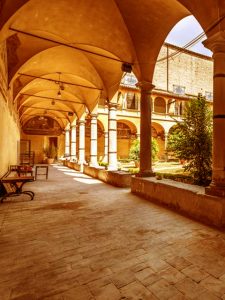
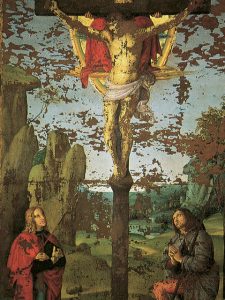 His father initiated him into painting, he underwent the fluid and undulating pictorial influence of Perugino, he created the intense luminosity of the chiaroscuro through a profound meditation related to the style of Piero della Francesca. According to Wolfgang Goethe’s opinion, Raffaello Sanzio had always managed to do what others dreamed of, but they were unable to do. He was able to visit Umbria and frequent Perugino’s workshop, until his father’s death, when he inherited the business. Sixteen, he moved to Città di Castello, where he painted a devotional work for a local brotherhood in thanksgiving for the end of a plague, the banner of the Holy Trinity https://www.cittadicastelloturismo.it/notizia/16122/?lang=en.
His father initiated him into painting, he underwent the fluid and undulating pictorial influence of Perugino, he created the intense luminosity of the chiaroscuro through a profound meditation related to the style of Piero della Francesca. According to Wolfgang Goethe’s opinion, Raffaello Sanzio had always managed to do what others dreamed of, but they were unable to do. He was able to visit Umbria and frequent Perugino’s workshop, until his father’s death, when he inherited the business. Sixteen, he moved to Città di Castello, where he painted a devotional work for a local brotherhood in thanksgiving for the end of a plague, the banner of the Holy Trinity https://www.cittadicastelloturismo.it/notizia/16122/?lang=en.
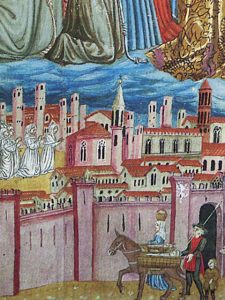
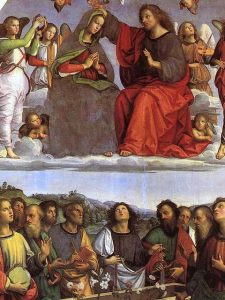 His fame spread to all of Umbria, making him one of the most requested painters, as in Perugia, where he painted three altarpieces (including the Pala degli Oddi, preserved in the Vatican Pinacoteca), with a Peruginian layout, however focusing on elements own stylistic. Starting from his first works, he revealed the originality of the pictorial language, simplifying the architectural composition in an innovative way, in which to arrange human figures, measured in gestures. Raffaello Sanzio enjoyed the privilege of having a father with skill in art and died at almost the same age as Wolfgang Amadeus Mozart. In Siena, he made a cartoon now kept in the Cabinet of Drawings and Prints in Florence, the Departure of Enea Silvio Piccolomini for Basel. Intrigued by the drawing of the Battle of Anghiari (made by Leonardo da Vinci), he decided to move to Florence.
His fame spread to all of Umbria, making him one of the most requested painters, as in Perugia, where he painted three altarpieces (including the Pala degli Oddi, preserved in the Vatican Pinacoteca), with a Peruginian layout, however focusing on elements own stylistic. Starting from his first works, he revealed the originality of the pictorial language, simplifying the architectural composition in an innovative way, in which to arrange human figures, measured in gestures. Raffaello Sanzio enjoyed the privilege of having a father with skill in art and died at almost the same age as Wolfgang Amadeus Mozart. In Siena, he made a cartoon now kept in the Cabinet of Drawings and Prints in Florence, the Departure of Enea Silvio Piccolomini for Basel. Intrigued by the drawing of the Battle of Anghiari (made by Leonardo da Vinci), he decided to move to Florence.
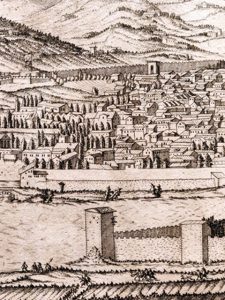
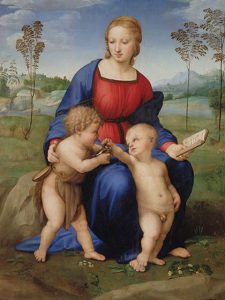 When he arrived in Florence in 1504, he appreciated and assimilated the artistic stimuli. He learned how to create groups of structured figures in space, the correct use of plastic chiaroscuro as well as the richness of chromatic power. He created tables for private devotion and intense portraits, with attention to naturalness, color and even landscape. Famous is his series of Madonnas with the Child, such as the extraordinary Madonna del Cardellino, datable to 1506, and preserved in the Uffizi Gallery in Florence.
When he arrived in Florence in 1504, he appreciated and assimilated the artistic stimuli. He learned how to create groups of structured figures in space, the correct use of plastic chiaroscuro as well as the richness of chromatic power. He created tables for private devotion and intense portraits, with attention to naturalness, color and even landscape. Famous is his series of Madonnas with the Child, such as the extraordinary Madonna del Cardellino, datable to 1506, and preserved in the Uffizi Gallery in Florence.
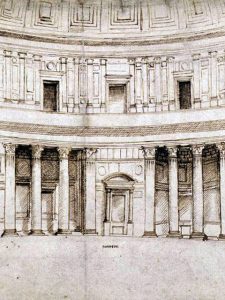 In 1508, the 25-year-old Raffaello Sanzio was in Rome, together with painters from all over Italy, for the decoration of the new papal apartments, creating, among other things, the fresco of the School of Athens or the Parnassus. For new clients, such as the very wealthy Sienese banker Agostino Chigi, in 1511, he created the fresco of the Triumph of Galatea, preserved in the Villa Farnesina in Rome. The sweet and immediate sensuality of the portrait of the alleged daughter of a baker, La Fornarina, perhaps his muse and lover, dates back to around 1519. In 1516, he slowly worked on an altarpiece commissioned from him by Cardinal Giulio de ‘Medici. The work, dynamic and innovative, concerned the Transfiguration of Christ, but remained unfinished. On April 6, 1520, on Good Friday, he died at the age of 37, but he continues to wait for us in Rome, inside the Pantheon.
In 1508, the 25-year-old Raffaello Sanzio was in Rome, together with painters from all over Italy, for the decoration of the new papal apartments, creating, among other things, the fresco of the School of Athens or the Parnassus. For new clients, such as the very wealthy Sienese banker Agostino Chigi, in 1511, he created the fresco of the Triumph of Galatea, preserved in the Villa Farnesina in Rome. The sweet and immediate sensuality of the portrait of the alleged daughter of a baker, La Fornarina, perhaps his muse and lover, dates back to around 1519. In 1516, he slowly worked on an altarpiece commissioned from him by Cardinal Giulio de ‘Medici. The work, dynamic and innovative, concerned the Transfiguration of Christ, but remained unfinished. On April 6, 1520, on Good Friday, he died at the age of 37, but he continues to wait for us in Rome, inside the Pantheon.
 To broaden your horizon of knowledge about other painters, you can type http://meetingbenches.com/category/paintings/. The sole purpose of this site is to spread the knowledge of these artists and that other people enjoy their works. The property of the images that appear in this blog correspond to their authors.
To broaden your horizon of knowledge about other painters, you can type http://meetingbenches.com/category/paintings/. The sole purpose of this site is to spread the knowledge of these artists and that other people enjoy their works. The property of the images that appear in this blog correspond to their authors.
 Meeting Benches World art in all forms
Meeting Benches World art in all forms

